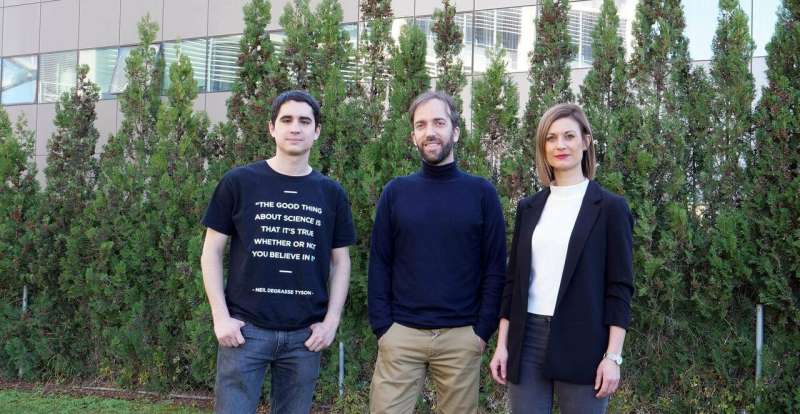Viruses interact socially with each other to evade the immune system

Pilar Domingo, Ernesto Segredo, María Durán and Rafael Sanjuán from the Institute of Integrated Systems Biology (I²SysBio) have shown that viruses behave altruistically to avoid the immune system. This research, published on Monday in Nature Microbiology and carried out in the vesicular stomatitis virus (VSV), has potential applications in the development of antiviral and vaccine treatments.
The study focused on the mechanisms used by the virus to evade the activity of interferon, that is, the innate immune response that higher organisms use to block viral infections. The research group used the vesicular stomatitis virus to propose a model of social evolution revealing how natural selection results in variants of the viruses that are able to block interferon.
Research has shown that viruses have evolved several mechanisms to avoid this activity, while also modifying the adaptation of other members of the viral population. Therefore, the interactions between viruses are of great importance for the evolution of the viral variants, and these are clearly a social process.
The results of the research, published in the journal Nature Microbiology, show that viruses interact socially with each other, and that the ecological and social principles that apply to other more complex organisms can also be applied to viruses. The work signed by Pilar Domingo, researcher at I²SysBio, has analysed the internal interactions of the vesicular stomatitis virus in mice, cell culture and computational modelling with simulations of complex systems using mathematical models.
According to the spokesman of the research group, although the analysis of interactions between viruses and host organisms is a common practice used to control disease or develop preventative measures, virus-virus interactions are still unknown. "In this work we show the altruistic capacity of the viruses, in which certain paths of escape from the immune system can be selected, although they may have a cost for viruses that encode this character," said Pilar Domingo.
More information: Pilar Domingo-Calap et al. Social evolution of innate immunity evasion in a virus, Nature Microbiology (2019). DOI: 10.1038/s41564-019-0379-8
Journal information: Nature Microbiology
Provided by Asociacion RUVID

















